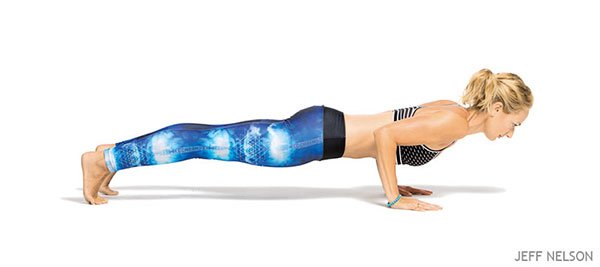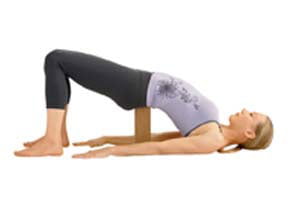How to do Kumbhakasana, Plank Pose
Yoga classes in Milton Keynes
Kumbhakasana – In Plank Pose, the body is held strong and straight like a plank of wood. Similar to a push-up, Kumbhakasana strengthens the arms and wrists, and tones the abdominal muscles. The upper back is expended fully, increasing oxygenation of the muscle tissue and the release of tension between the shoulder blades.
1. Kneel on the floor with hands shoulder width apart. Have your hands in front of the shoulders and lean more weight forward on to them. Spread your fingers wide and push strongly through the palms of the hands as if you are lengthening your arms. Press the vertebrae between the shoulder blades up towards the ceiling, so that the skin between the shoulder blades widens and the upper back broadens. Keep the back of the neck long, face looking down and chin tucked in slightly toward the throat. Fully involve your abdominal muscles by drawing them back towards the spine. This is Kneeling Plank Pose (Kumbhakasana modification).

2. Tuck your toes under and lift the knees up. Bring your hips into line so that everything from the back of the head through the sacrum to the back of the heels is in one plane. Take care not to sink the hips too low–if you are collapsing into a valley, re-establish the workings of your abdominal muscles to firm them. If your buttocks lift in a mountain shape, check that your shoulders are correctly positioned. Bring your weight forward so your shoulders line up over your wrists–you might need to walk your hands forward.

3. Now round up the upper back to broaden the back and spread the shoulder blades apart. Squeeze the buttocks together and draw the pubic abdomen gently in toward the spine. Condense from the pubic bone to the lower ribs. Lengthen the tailbone toward the heels. Press the palms evenly to the floor. Hold for five breaths. From plank pose (Kumbhakasana) you may lower into Four Limbed Staff Pose, or lift up to Downward Facing Dog Pose.

Four Limbed Staff Pose

Downward Facing Dog Pose
TIPS
Gaze: Tip of nose
Build-up poses:
- Downward Facing Dog Pose
- Four Limbed Staff Pose
Counter Poses:
- Locust Pose
- Supported Bridge Pose
- Wrist Releases
Lighten:
- Stay at the first stage, Kneeling Plank Pose
- Hold for a shorter time
Effect: Strengthening
Kumbhakasana, Plank Pose Counter Poses
In yoga we use a counter pose in a sequence; For example, a twist follows a backbend to “neutralise” the spine, or a forward bend follows a backbend to help lengthen the spine and calm the nervous system.

Supported Bridge Pose



